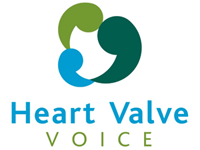Heart Valve Disease
QUICK LINKS
Heart Valve Disease: Understanding Treatment Options
Heart valve disease is a common and serious condition that affects over 1.5 million people in the UK. Despite its seriousness, it is highly treatable. With timely intervention, many individuals can return to a high quality of life, often symptom-free.
Treatment Options for Heart Valve Disease
Treatment for heart valve disease depends on the severity of the condition. Effective management typically involves either valve repair or replacement. Advances in medical technology have significantly improved treatment outcomes, with less invasive procedures now available.
- Valve Repair or Replacement: Traditional surgical procedures for valve repair or replacement have been successful for many decades. These procedures involve either repairing the damaged valve or replacing it with a prosthetic valve.
- Transcatheter Aortic Valve Implantation (TAVI): A less invasive option that has gained prominence in recent years is Transcatheter Aortic Valve Implantation (TAVI). This procedure is often recommended for patients who are considered high-risk for traditional surgery. TAVI involves inserting a new valve through a catheter, typically inserted through a blood vessel in the groin or chest, avoiding the need for open-heart surgery.
Multidisciplinary Team (MDT) Approach
A Multidisciplinary Team (MDT) will review your case to determine the most appropriate treatment pathway. The MDT typically includes cardiologists, cardiothoracic surgeons, and other healthcare professionals who collaborate to ensure a comprehensive approach to your care.
- Personalised Treatment Plan: Your doctor will discuss the treatment options with you and recommend the most suitable approach based on your specific condition and overall health.
Advancements in heart valve disease treatments continue to improve outcomes and quality of life. If you have concerns or symptoms of heart valve disease, consult with your healthcare provider to explore the best options for you.
There are pros and cons to each type of surgical procedure and valve replacement, depending on age and lifestyle. You should discuss with your physicians which valve and surgery are most suitable for you.
Due to Patient Choice initiative, patients in the NHS have the right to choose where they are treated but you will need to be referred by your consultant cardiologist or GP.
Tips for family, friends and carers
- Learn the facts before they have their surgical procedure so that they’ll know what to expect.
- For further information on heart valve disease, please see our Heart valve disease fact sheet here.
Heart Valve Disease
QUICK LINKS
Patient Story: Phillip
After beginning to feel breathless in 2018, Phillip Warlow was diagnosed with aortic stenosis in April 2019. With his condition deteriorating, Phillip required early intervention and received a tissue valve at Morriston Hospital, Swansea. Since being treated, Phillip is back enjoying life with his grandson, welcomed a new granddaughter into the world and now supports Heart Valve Voice to raise awareness of the disease.

Read Phillip’s story in full…



